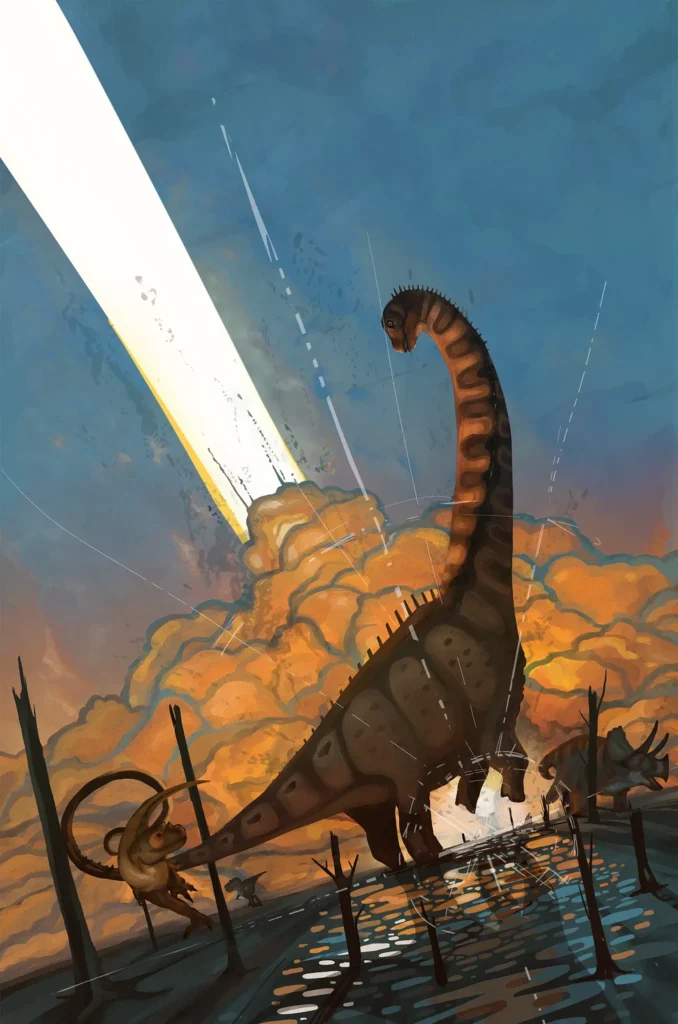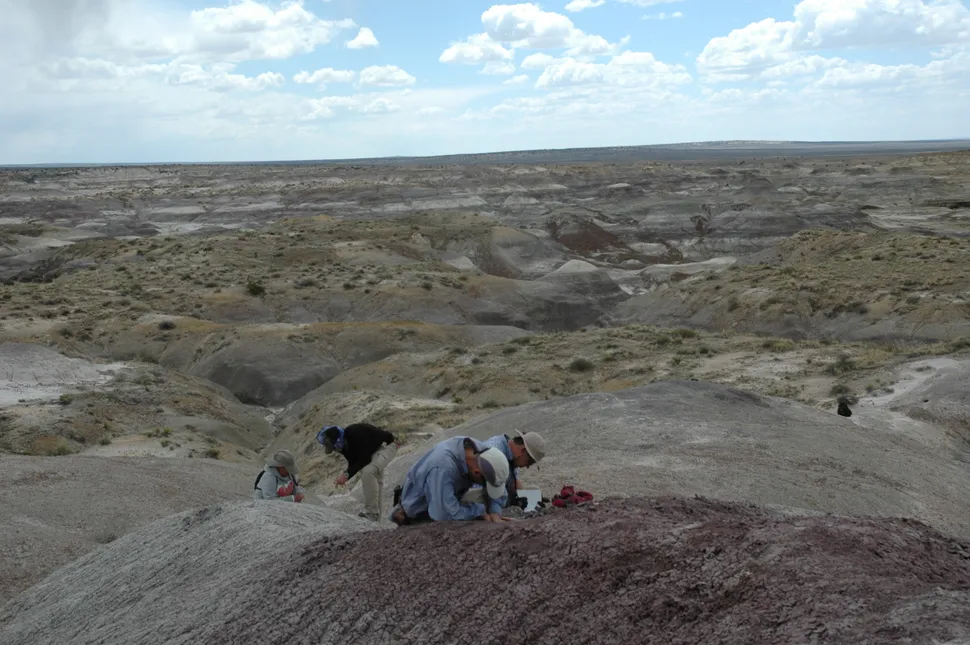New research has revealed that the last dinosaurs roaming New Mexico were thriving and diverse right up until the catastrophic asteroid impact that ended their reign 66 million years ago. The findings challenge the long-standing theory that non-avian dinosaurs were already in decline before their extinction.
The study, published in Science on October 23, examined fossils from the Naashoibito Member formation in New Mexico — a site that once hosted a vibrant ecosystem filled with long-necked Alamosaurus, horned dinosaurs, duck-bills, and predatory tyrannosaurs. Using advanced rock dating techniques, scientists determined that these fossils date to between 66.4 million and 66 million years ago, placing them just before the Chicxulub asteroid struck Earth.
“At least before the mass extinction event, they appear to be thriving,” said Andrew Flynn, lead author and assistant professor at New Mexico State University. “The diversity of species we found suggests that dinosaur populations were healthy.”

The research team used two independent methods — argon isotope dating and paleomagnetic analysis — to pinpoint the site’s age. These approaches confirmed that the dinosaurs of New Mexico were among the last to walk the planet before the asteroid impact triggered a global extinction that wiped out roughly 75% of life on Earth, sparing only birds among dinosaurs.
The study also revealed that New Mexico’s dinosaurs were distinct from those found in regions such as Montana’s famous Hell Creek Formation, suggesting that different pockets of dinosaur diversity existed across North America near the end of the Cretaceous.
While some scientists have argued that changing climates or ecological pressures weakened dinosaur populations, this research supports the idea that they were cut down suddenly, not fading away slowly.
“This work really highlights the importance of studying new, understudied localities,” Flynn said. “Each new site adds vital detail to our understanding of how life on Earth changed forever.”
The discovery paints a vivid picture of a world full of life — one that ended not from gradual decline, but from a single, devastating day.
